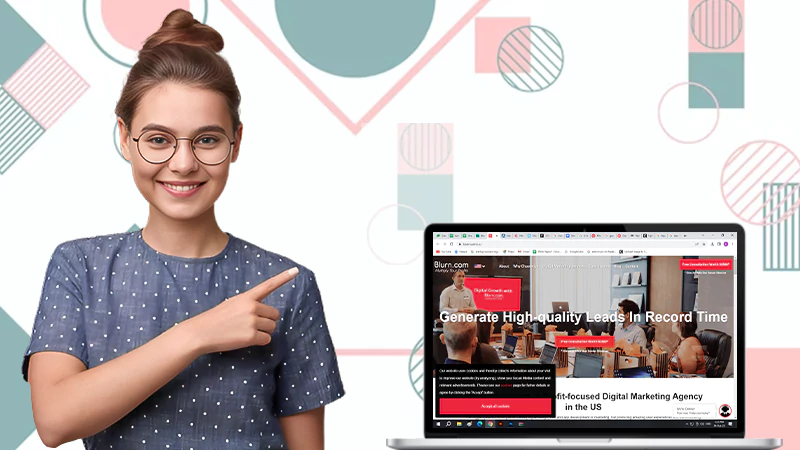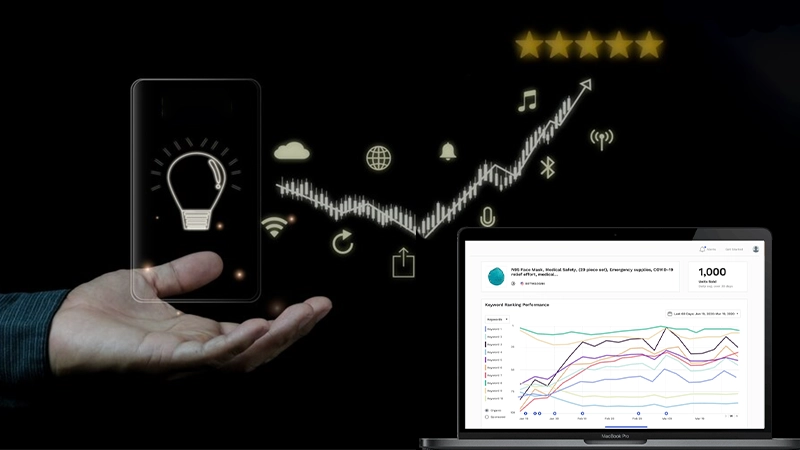10 Best Practices for Responsive Web Design
Responsive web designing is advancing beyond simply adjusting the alignment of web pages. For instance, the current web designing theory believes that a designer should deliver a website in many ways depending on the screen’s width. While designing a responsive web application, various questions might arise in your mind. Certain practices can help you get an insight into everything that it takes to build a proper, efficient, and responsive web application. This article will discuss all the practices that a designer must follow to create a successful, responsive web application.
What is a Responsive Web Design?
Responsive web design is one of the advanced practices that are common in the present Software Development Industry. In this process, the designer creates the website to be accessible on all devices irrespective of the screen size, resolution, and device platform. Additionally, Viewer proximity is also considered to be a crucial part of responsive web designing. In simple words, this process allows you to ensure that every customer can access your website on their respective device. Thus, responsive web design can ensure that a company will have control over the entire user base.
Best Practices for Responsive Web Designing
1. Hidden Navigation Menus
On smaller screens, you can keep the layout simple by hiding the main navigation menu. Additionally, you can use icon, text, or a combination of both to indicate the user about the main navigation menu’s position. You can either use a dropdown or overlay method to make the menu visible to users when they try to access it. However, it would be best to remember that the menu will expand inside and gradually cover the entire screen. This process will hide specific details on your website. Thus, you must organise all the details depending upon their importance. In a desktop view, you can use a simple company logo to indicate the user about further options available on clicking the button.
Furthermore, you can also try to customize the menu to attract your user’s attention and make it more visually appealing.
2. Horizontal Swipeable Menus
A horizontal swipeable menu is another excellent way to make the menu available on a smaller screen while maintaining a simple website layout. In this process, you keep the website visible while ensuring the content overflows to the edge of the screen. Major companies use this method with a call to action button. This button’s primary function is to show all the available options when the user clicks on it. It is a perfect example of integrating different methods in the available space.
For instance, the horizontal scroll menu available on Google is a simple list of text links. This link usually overflows to the edge of the screen and indicates that more content will be available on swiping. Additionally, each of the text links has an individual drop-down menu that appears when the user clicks on it.
3. Provide Large Clickable Areas to Buttons and Links
Many companies commit the mistake of making the button smaller on mobile devices, thinking that it will be easy to access. However, a recent survey suggests that larger buttons are more comfortable with tapping on most mobile browsers. Additionally, it has been proved that large buttons are easily accessible irrespective of the device. So, we can justify that large button size helps to increase the usability of a web application.
Along with button size, text links also benefit from a larger size. For instance, you can have a large font size for the essential text links you want a customer or user to access. Additionally, you can block the area around the text link to ensure that the user can access the link by clicking anywhere around the text. In simple terms, an easier to read website provides a better experience to all users.
4. Balance Font Weights and Text Sizes
As a designer, you must maintain a perfect balance between header and paragraph fonts. For instance, excessively large headers don’t look attractive on a mobile device if stretched over a few lines. So, it would be best if you resized everything correctly according to the device.
All the new mobile device screens have high resolution. Thus, the text becomes more readable on these devices as this resolution gives you the ability to have a smaller font size while maintaining a website’s readability. While designing the titles for a mobile application, you must ensure that the label never overpowers the website’s other details.
5. Maintain Optimal Viewing Widths
A designer must consider a content’s line length while working on websites for touch screen devices. For instance, a website’s readability decreases with length text as the user can’t follow every line that is present on the web page. However, two short lines also break the rhythm for reading as it confuses the reader. So, we can determine that every designer must practice an average line length of 75 characters. Additionally, you have to set the text width to a maximum of 700 pixels. This process will allow you to ensure that all the text present on the website remains readable on every device.
It is essential to maintain optimal reading with the help of simple link sharing and a well-positioned sidebar in simple terms. Additionally, a lot of white space, along with a transparent clutter-free sidebar, ensures that your website remains accessible to the user base.
6. Place All the Important Information near the Top of the Screen
As a designer, you must ensure that all the vital information present on the web page gets the required attention. For instance, you should place all the contact information, transaction details, and call to action buttons on the top of the website. A survey suggests that all mobile users want access to quick information. So, this process will help satisfy this goal. Additionally, information priority works on almost every device. Many people think that this process is no longer valid as browser sizes are continuously changing. However, major companies have stated that it is essential to map all call to action buttons at the top of the page.
For eCommerce websites, this is essential to provide easy access to all the desired items. For instance, the user can make all the transactions on this website without having to scroll down.
7. Provide variation in Content Information Order during Screen Collapsing
Information priority is highly essential for designing a successful, responsive web application. It would help if you found out the importance of every text on the web page to sort them out according to the priority. For instance, you can use CSS to change the content order on almost every web application. Additionally, for desktop websites, you must sort the priority between text blocks and image blocks.
The placement of the sidebar also plays a significant role in a mobile website. For instance, an oddly placed sidebar would collapse and hide a lot of information present on the web page. Moreover, you can use a side by side method for the menu option to solve various text placement issues.
8. Hide Some Content on Smaller Screens
For a mobile website, you must ensure that you place the text correctly, considering the screen size. Thus, you must prioritize critical information to make them visible without scrolling. For instance, you can hide certain information to maintain a simple look for the web application. Additionally, you can go for partial data hiding mechanism by transferring the information on a different type and making it optional access. This process will improve data clustering on a web page and help users notice critical information according to their desire.
9. Provide More Content on Larger Screens
A widescreen gives the developer the freedom to display more information on the website. Thus, you also have the liberty to push more content further up the device screen. So, you can increase the visibility of the content for your website. Moreover, the layout option allows you to expand and accommodate more columns on the initial web page. For instance, users with bigger displays can access more information on the web application without scrolling down. In simple words, you must think about the layout of the device and try to maximize the space utilization for every device and screen size.
10. Give Important to Tablets in Portrait Mode
Smartphones are rapidly growing in the present industry. Many experts have suggested that by the end of 2021, there will be 756 million smartphones in the entire world. Thus, while creating a responsive web design, you must study the whole customer base accessing your mobile device application. It would be best if you also considered space utilization on all the tablet devices. So, you can use the media query option available in CSS to improve your web application layout. For tablets, you should try to display as much information as possible without disturbing the layout’s proportion and orientation.
Testing Your Responsive Web Design – LT Browser
As a company, you must ensure that your web application is responsive on all latest browsers & OS and offers a seamless experience. Thus, it becomes imperative to test the responsiveness of a web application. Various tools can help you with this process. However, we recommend our readers checkout LT Browser as a tool for responsive web designing. It is a desktop based application using which users will be able to test and debug their web-apps on 40+ devices.
Additionally, you can check the web application design on any browser without actually downloading them on your device. Thus, this process allows you to save a lot of time and effort.
The Verdict
So, we can conclude that responsive web design allows increasing the traffic on your website. For instance, the website will provide an uneven user experience on various devices if it isn’t designed correctly. The number of mobile devices is increasing at a rapid rate. So, you must ensure that you provide a seamless experience on all mobile and tablet devices. This process will help you to have a firm grip over the vast market. Lastly, we would recommend our readers checkout LambdaTest to ensure the responsiveness of the web application.
Follow Us
Latest Post
















